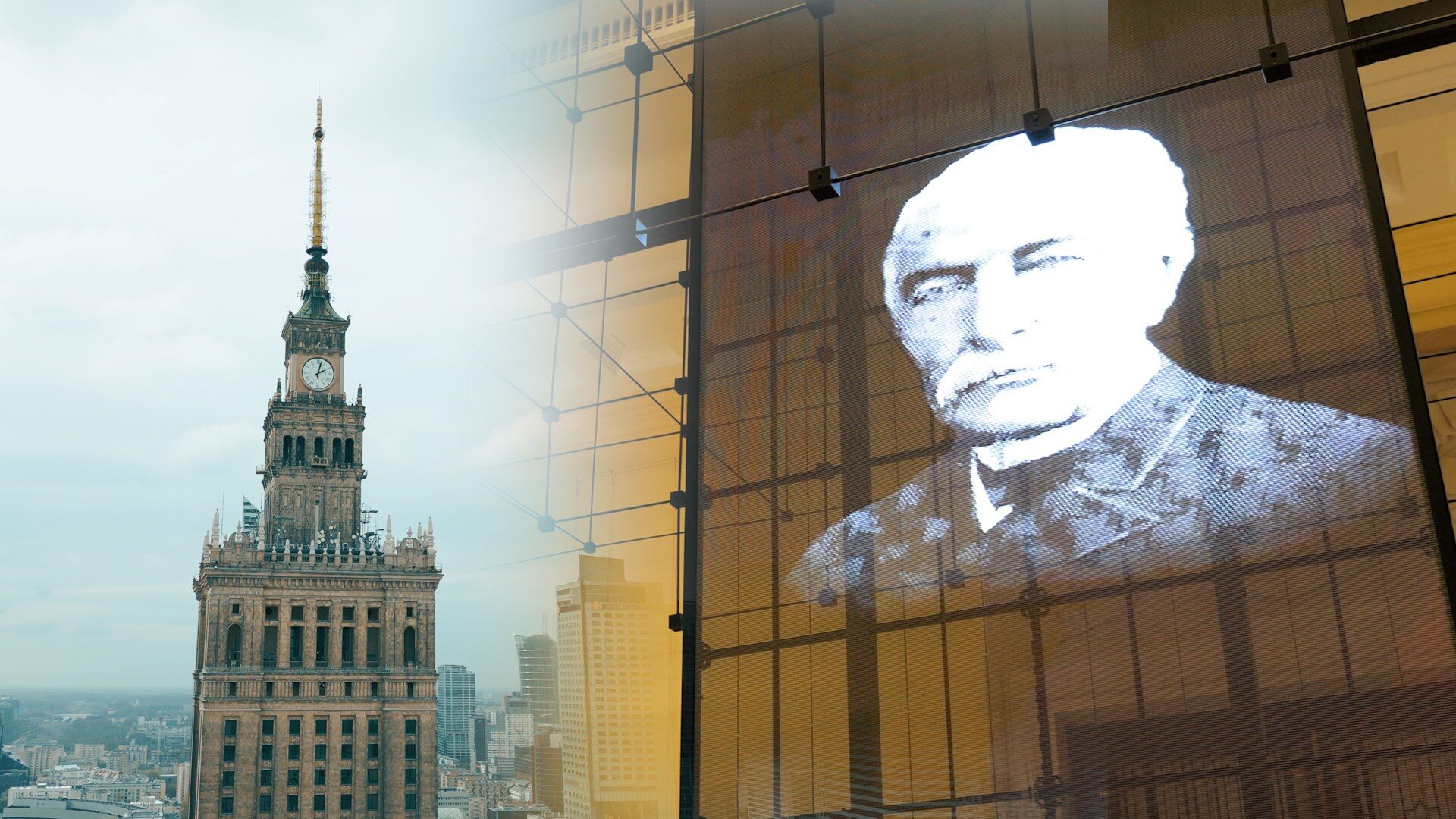Polish contribution to technical heritage. “Many inventions have Polish roots”

Polish inventors, engineers and researchers made a huge contribution to the world’s technical heritage, which we often forget about. The National Museum of Technology recalls Polish achievements at the main exhibition, which we visited as part of the series “Science is a Polish specialty”.
Zasław Adamaszek, Head of the Education and Exhibitions Department of the National Museum of Technology, and Jerzy Lemański, Museum Specialist, showed us around the exhibition “The contribution of Poles to the world’s technical and scientific heritage”.
Poles are behind many famous inventions
– It is the duty of the National Museum of Technology to make Poles aware that from the very beginning we have been actively involved in improving the world, and many inventions have Polish roots – stresses Jerzy Lemanski.
“Unfortunately, Poles don’t know about it,” he adds.
As an example, he tells the story of cinema. – If we ask anyone in the world about the beginnings of cinema, they will probably associate the Lumière brothers, because the French were able to take care of it and they did it in such a way that the whole world found out that they invented cinema. And that’s not true, he stressed. “Even Lumière admitted that there was a Pole before them who had done it before, Kazimierz Prószyński,” pointed out an employee of the Museum, telling us about the extraordinary achievements of the Pole in the field of cinematography development.
Another outstanding Polish engineer, about whom we learn at the exhibition, is Ernest Malinowski, the builder of the high-mountain railway in Peru, which was almost 5,000 meters above sea level.
“Lots of viaducts, bridges and tunnels were built in times when dynamite had not really been used yet,” says Lemański. – Something unbelievable that it was done so quickly and it was done by a Pole who today has his monuments in Lima and in various cities of Peru – he added.
In the case of many distinguished people, it is often forgotten that they were of Polish descent. Such a person was the famous Max Factor, or Maksymilian Faktorowicz.
– He reached the area of today’s Los Angeles and founded a wig shop and a cosmetics shop there. It was at that moment when Hollywood was growing, when all the movie stars moved to the west of the United States and the film industry was developing there. And these stars found their way to Faktorowicz – said an employee of the National Museum of Technology, pointing out that it was Max Factor who dyed Rita Hayworth’s characteristic red hair, brightened the complexion of Rudolf Valentino, or dealt with the make-up of Pola Negri, Frank Sinatra and Charlie Chaplin. – This man shaped the look of silent movie stars. He was number one in terms of characterization of actors – emphasizes Lemański.
Another person presented at the exhibition, whose roots are often not known, is the famous watchmaker Antoni Patek. – There was a meeting in Switzerland between Mr. Philippe and Mr. Patek. Together, they were a great duo that made beautiful and technically great watches. And these watches are known to this day – said Lemański.
Periscope, mine detector, bulletproof vest
Many of the inventions that the Poles created were driven by the war industry.
– Polish contribution to the world’s technical heritage is largely the area of broadly understood military and war technology – emphasizes Zasław Adamaszek, reminding that the prototype of the periscope, i.e. the polemoscope, was the idea of the Polish astronomer Jan Heweliusz.
The head of the Education and Exhibitions Department also pointed out that Heweliusz’s polemoscope developed into two excellent instruments, pointing to the activities of the Polish surgeon Jan Mikulicz-Radecki and the military engineer Rudolf Gundlach. The latter, even before World War II, perfected the use of the periscope in the military, in armored vehicles.
The former used the operating principle of the polemoscope as a diagnostic tool for gastroscopy. – Mikulicz-Radecki’s gastroscope allowed to go as deep as half a meter from the oral cavity and also to see the lower wall of the stomach. It was possible to see if there were any lesions there – said Zasław Adamaszek, pointing out that the same Polish surgeon popularized the use of surgical masks.
An employee of the Museum also talked about other Polish inventions related to the military, including the mine detector by Józef Kosacki, which can be seen at the exhibition of the National Museum of Technology, or a bulletproof vest made of the material designed by Kazimierz Żegleń, improved by Jan Szczepanik. The museologist reminded here that the American chemist Stephanie Kwolek, who developed kevlar, also had Polish roots.
Polish inventions in the world… and beyond
But the Polish contribution to the world’s technical heritage is not only military issues. – Jan Dzierżon, a Polish monk, but also a scientist and avid beekeeper, changed the image of the food industry related to the production and processing of honey. A monk from Upper Silesia observed that in nature bees create their honeycombs in a certain way. He developed this observation by studying the behavior of bees for many years and came up with the idea of creating frames, inserted into the hives at certain distances and equipped with stabilizing wires – said Zasław Adamaszek, pointing out that Dzierzon’s invention revolutionized beekeeping, significantly increasing honey production. It was in honor of this inventor that Dzierżoniów was named.
The head of the Department of Education and Exhibitions of NMT also told us about the authors of inventions related to the automotive industry – the improvement of batteries by Karol Pollak, or developed in the 70s by Polskie Zakłady Lotnicze in Mielec Meleks.
“One of the great inventions of the Polish design crossed the boundaries of planet Earth and is still standing on the moon,” said Adamaszek about the Polish manager of the Boeing team that developed the lunar LRV vehicle, Mieczysław Bekker. – He developed unique wheels for the LRV, as well as the vehicle itself, which in 1971 reached the surface of the moon. The Apollo 15, 16 and 17 missions were equipped with all-terrain rovers designed by Mieczysław Bekker – he emphasized.
At the exhibition “The contribution of Poles to the world’s technical and scientific heritage” you can also learn about the scientific achievements of Stanisław Ulam, one of the most brilliant Polish mathematicians. “He participated, among other things, in the Manhattan project, i.e. the construction of the atomic bomb,” emphasized Zasław Adamaszek. – Ulam, developing creatively and mathematically, elaborating the ideas created there, gave the first correct recipe for constructing a thermonuclear bomb. And modern research devoted to obtaining cheap, clean and safe energy focuses on nuclear fusion, the beginnings of which should be sought in the works of the Polish mathematician related to nuclear fusion – he added.
– The approximately 100 characters in our exhibition are a great reference point. But searching the history of technology of the last three hundred years, you will find at least one Pole for every year who has developed something interesting – said Zasław Adamaszek.
The museologist also pointed out that Polish inventors, engineers and scientists operated all over the world due to emigration caused by many factors.






